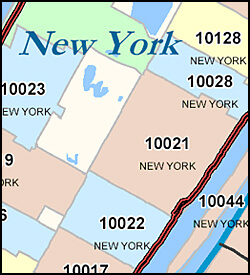


The FIPS code for the Core Based Statistical Area (CBSA) that includes the zip code (if it exists). The percentage of residents who are veterans. The percentage of residents who report not having health insurance. The median commute time of resident workers in minutes. The percentage of residents who only speak limited English.

The percentage of residents who report a disability. Note: Only filers who are itemizing will report charitable giving. The percentage of households reporting charitable giving on their 2016 tax return. The percentage of households reporting farm income on their 2016 IRS tax return. The percentage of households reporting self-employment income on their 2016 IRS tax return. The percentage of residents with a Bachelor's degree or higher in a Science and Engineering (or related) field. The percentage of residents with a graduate degree. The percentage of residents with a bachelor's degree (or equivalent) but no more. The percentage of residents with some college but no more. The percentage of residents with a high school diploma but no more. The percentage of residents with less than a high school education. The median rent as a percentage of the median renter's household income. The median value of owner occupied homes. The median income of individuals in the zip code. The percentage of households with income over $150,000. The percentage of households with income from $100,000-$150,000. The percentage of households with income from $75,000-$100,000. The percentage of households with income from $50,000-$75,000. The percentage of households with income from $35,000-$50,000. The percentage of households with income from $25,000-$35,000. The percentage of households with income from $20,000-$25,000. The percentage of households with income from $15,000-$20,000. The percentage of households with income from $10,000-$15,000. The percentage of households with income from $5,000-$10,000. The percentage of households with income under $5,000. The percentage of families with dual income earners. The percentage of residents never widowed. The percentage of residents never married. The percentage of residents aged over 80. The percentage of residents who report their race as Two or more races. The percentage of residents who report their race as Some other race. The percentage of residents who report their race as Native Hawaiian and Other Pacific Islander. The percentage of residents who report their race as American Indian and Alaska Native. The percentage of residents who report their race as Asian. The percentage of residents who report their race as Black or African American. The percentage of residents who report their race White. The percentage of residents unemployed as of 2019. The percentage of residents 16 and older in the labor force as of 2019. The percentage of residents with at least a 4-year degree. The median rent paid by renters as of 2019. The median value of homes that are owned by residents as of 2019. Percentage of households that own (rather than rent) their residence. Percentage of households that earn at least $100,000 (e.g. The average size of resident families (e.g. The percentage of residents who report being married (e.g. The percentage of residents who report being female (e.g. The percentage of residents who report being male (e.g. The median age of residents in the zip code. The name of all counties that overlap the zip. The 5-digit FIPS code for all counties that overlap the zip. The city's time zone in the tz database format. TRUE if the zip code is used by the US Military ( lat/ lng not available). TRUE if the lat/ lng has been geolocated using the city (rare). The zip's primary county in the FIPS format.Ī JSON dictionary listing all county_fips and their weights (by population) associated with the zip code. The estimated population per square kilometer. Useful for making inferences about a zip codes that is a point from the ZCTA that contains it.Īn estimate of the zip code's population. TRUE if the zip code is a Zip Code Tabulation area ( learn more). The longitude of the zip code ( learn more). The latitude of the zip code ( learn more). The 5-digit zip code assigned by the U.S. Simple: A single CSV file, concise field names, only one entry per zip code.



 0 kommentar(er)
0 kommentar(er)
